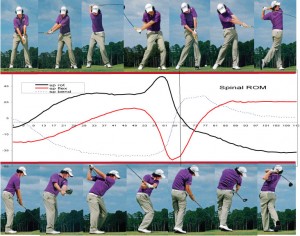Copied from jospt.org
PERSPECTIVES FOR PATIENTS
Painful and Tender Muscles: Dry Needling Can Reduce Myofascial Pain Related to Trigger Points Muscles
Published: Journal of Orthopaedic & Sports Physical Therapy, 2013, Volume: 43 Issue: 9 Pages: 635-635doi:10.2519/jospt.2013.0505
Keyword: arm pain, myofascial pain syndrome, neck pain
Trigger points are irritable, hard “knots” within a muscle that may cause pain over a large area, leading to difficulty performing everyday tasks. When a trigger point is touched, it hurts and can also cause pain in nearby areas (see illustration). When a person has painful muscles and trigger points, it is sometimes called myofascial pain syndrome. Common locations for these problems are the arm and neck. Dry needling is a treatment that involves a very thin needle being pushed through the skin to stimulate a trigger point. Dry needling may release the tight muscle bands associated with trigger points and lead to decreased pain and improved function. In a study published in the September 2013 issue of JOSPT, a group of researchers analyzed the results of the best clinical studies that have been conducted thus far to determine if dry needling helps to reduce neck and arm pain.
After reviewing many sources of information and evaluating both the quality and results of the relevant studies, the researchers determined that dry needling can be effective in providing pain relief. These studies noted that a “twitch” often occurs when a needle is inserted into the trigger point, and this “twitch” may be a sign that the treatment will be helpful. The authors of the JOSPT article also found that the effects of dry needling varied across studies and that more research needs to be done to determine whether dry needling is better for this condition than other treatment options.
Myofascial pain syndrome, or trigger points, can be a source of pain and limit function. Dry needling is a specialized treatment for trigger points provided by some physical therapists. It is one possible treatment option, usually combined with other techniques including exercises, to manage myofascial pain. Your physical therapist can perform a thorough evaluation to help determine if you are a good candidate for this treatment as part of a program designed to reduce your pain and improve your function. For more information on the treatment of myofascial pain, contact your physical therapist specializing in musculoskeletal disorders.
For this and more topics, visit JOSPT Perspectives for Patients online at www.jospt.org.
This JOSPT Perspectives for Patients is based on an article by Kietrys DM et al titled “Effectiveness of Dry Needling for Upper-Quarter Myofascial Pain: A Systematic Review and Meta-analysis,” J Orthop Sports Phys Ther 2013;43(9):620–634. Epub 11 June 2013. doi:10.2519/jospt.2013.4668.
This Perspectives article was written by a team of JOSPT's editorial board and staff, with Deydre S. Teyhen, PT, PhD, Editor, and Jeanne Robertson, Illustrator.
NEEDLING TRIGGER POINTS. Trigger points, often a component of myofascial pain syndrome, are irritable, hard “knots” within a muscle that may cause pain over a large area (A). A potential treatment option is dry needling, which consists of a very thin needle that your therapist pushes through the skin to stimulate the trigger points, muscles, or connecting tissues (B). Dry needling may release the tight muscle bands and decrease pain (C).
JOSPT PERSPECTIVES FOR PATIENTS is a public service of the Journal of Orthopaedic & Sports Physical Therapy. The information and recommendations contained here are a summary of the referenced research article and are not a substitute for seeking proper healthcare to diagnose and treat this condition. For more information on the management of this condition, contact your physical therapist or healthcare provider specializing in musculoskeletal disorders. JOSPT Perspectives for Patients may be photocopied noncommercially by physical therapists and other healthcare providers to share with patients. The official journal of the Orthopaedic Section and the Sports Physical Therapy Section of the American Physical Therapy Association (APTA), JOSPT strives to offer high-quality research, immediately applicable clinical material, and useful supplemental information on musculoskeletal and sports-related health, injury, and rehabilitation. Copyright ©2013 Journal of Orthopaedic & Sports Physical Therapy®
Get Strong! Stay Strong!
Chris

